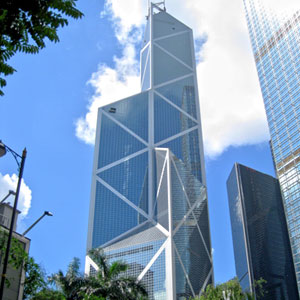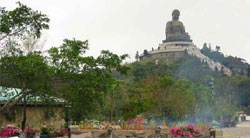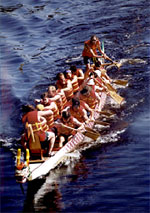|
|
|
|
Top Hong Kong Destinations:
Hong Kong hotels Tsim Sha Tsui hotels Kowloon hotels Wanchai hotels Causeway Bay hotels See more hotels in Hong Kong
World Destinations:
 Guides » Hong Kong » The Riches of Hong Kong Guides » Hong Kong » The Riches of Hong KongThe Riches of Hong Kong
Hong Kong is a city in China consisting of lights and action, a big city with 14 million people milling about trying to make their way through the crowds. However, Hong Kong is also an efficient and peaceful city with incredible shopping centers, temples, gorgeous parks, and more. While visiting Hong Kong, you will have the amazing opportunity to savor new tastes, see new sights, and experience something complex yet simplistic. Hong Kong’s history is a complicated one, much too widespread to cover in one article but we did want to provide you with an overview of a few of the more impressive moments.
For starters, archaeologists have determined that people inhabited Hong Kong some five millennia ago. Some of the treasures uncovered included bronze fishing and battle tools, found primarily on the Lamma and Lantau Islands. Hong Kong has had many dynasties, making it a little difficult to follow but we know that the territory was settled by the Han Chinese starting in the Han Dynasty. Interestingly, the ancient tomb at Lei Cheng Uk has been connected to the Eastern Han Dynasty. Then during the Tang Dynasty, the Guangzhou flourished, becoming a major international trading center. This area, which was called Tuen Mun, was established as the outer port, naval base, and even an anchorage and salt production area.  Even to this time however, no significant residence occurred in Hong Kong until migrations from other regions of China began during the Song Dynasty (960 to 1279). Experts know at this time that salt production increased, which is evidenced in more excavations whereby fishery and farming utensils were found. However, when the Mongols took control, this expansion was quickly decreased. By 1276, the Southern Song Dynasty court left for Fuijan, followed by Guangdong via boat. Additionally, after the surrender of Emperor Gong of Song China in Hangzhou, Mongol invaders fled. Even to this time however, no significant residence occurred in Hong Kong until migrations from other regions of China began during the Song Dynasty (960 to 1279). Experts know at this time that salt production increased, which is evidenced in more excavations whereby fishery and farming utensils were found. However, when the Mongols took control, this expansion was quickly decreased. By 1276, the Southern Song Dynasty court left for Fuijan, followed by Guangdong via boat. Additionally, after the surrender of Emperor Gong of Song China in Hangzhou, Mongol invaders fled.
The only hope of resistance was left in the hands of two young princes, both Emperor Gong’s brothers. Interestingly, the oldest of the boys, Zhao Shi, was named Emperor although he was just a mere boy at the age of nine. The Imperial Court looked for refuge in Mui Wo, located on the Lantau Island but then in Kowloon City. Unfortunately, Shi became very ill and died, which mean his younger brother, Zhao Bing who was just seven, became Emperor. In 1279, the Song army was defeated in what would be the last battle against the Mongols called the Battle of Yamen. History tells us that the boy Emperor was taken into a high official’s arms, jumping off a high cliff, drowning them both. With the Mongols still trying to take control over the city and the Song Dynasty, more Han Chinese refugees poured in, some of them being direct descendants of Wen Tianxiang, a patriotic leader. From there, historians have been able to determine that five families, which included the Hau, Tang, Pang, Liu, and Man, became early settlers, although the land itself was still quite barren with just fishing, pearl, and salt trades available. From that time forward, Hong Kong has undergone tremendous struggles. For instance, in 1517, sailors landed on Tuen Mun Island, killing some of the local villagers, wars between Puntis and Hakkas broke out, and things during the Qing Dynasty began to change. By 1847, the Kowloon Walled City was constructed, built by the government where it would remain during the early rule of the British. Then in 1699, the British East India Company tried its first sea venture to China, and then to develop trade with Hong Kong, which it did in 1711 when a trading post was established in today’s Guangzhou. The city went through the First Opium War, Britain’s control of Hong Kong Island under the Treaty of Nanking, the Second Opium War, a horrific plague of the bubonic plague in Southern China with some 100,000 people dying in Guangzhou alone, and the creation of the 99-year lease of the New Territories, controlled by the United Kingdom. However, when Hong Kong was fully developed in the 20th century, it was disrupted by the Japanese during World War II. The invasion of Japan was resisted by the British, Indians, Canadians, and Hong Kong Volunteer Defense Forces beginning in 1941 just hours after the bombing of Pearl Harbor. Unfortunately, these defense positions had no chance with the Japanese having superior air attack. Quickly, both the British and the Indians retreated although intense fighting continued on Hong Kong Island. Then on December 25, 1941, a day that would be called by the locals as “Black Christmas”, the British surrendered at the Japanese headquarters. With that, Isogai Rensuke became the first Japanese governor of Hong Kong. Japan took control of the city, setting up leadership, changing the money to Japanese Yen, and turning many of the cities into military bases. During this time, tens of thousands of women were raped, large areas of the mainland became disease ridden, famine was widespread, and by the end of the war in 1945, Hong Kong had dropped from 1.6 million people to just 600,000. Next, came a communist takeover of China’s mainland, causing hundreds of thousands of people to migrate to Hong Kong. With this, people put their skills to work, and soon there was economic success. Unfortunately, this too came with a price when the Cultural Revolution was established, creating violent riots. When the Hong Kong government brought down the labor movement, the network of communists in Hong Kong also fell. To fight the ongoing corruption, the Independent Commission Against Corruption foundation was established in 1974. Mainland Chinese markets opened, income began to rise, and soon, the city of Hong Kong transformed itself into a major commercial and tourist center. Even with substantial growth and prosperity, Hong Kong would continue to go through various struggles, specifically over the People’s Republic of China (PRC) and their taking control of the New Territories once the 99-year lease expired. However, in 1997, Hong Kong was finally handed over to the PRC and elections brought new officials onboard. Today, Hong Kong offers many tourists sites that take you back in time while also offering new and exciting things to do and see. In fact, this city has become such a Mecca for tourisms that every year, millions of people come from around the world to experience the culture. In return, tourists enjoy a variety of cultural, natural, and cosmopolitan attractions. For example, Victoria Park takes visitors to the top of “The Peak’s” summit where they can look down over the massive web of skyscrapers. At night, the city is lit up like a Christmas Tree, making this a magnificent adventure. You can also enjoy many of the open-air markets where all types of things are sold such as inexpensive fashion items, jewelry, electronics, and so on. While there are many markets to experience, the Yau Ma Tei’s Temple Street Night Market is a real joy to see. For family entertainment, there is Ocean Park, the largest complex in all of Asia. You will be amazed at the reef aquarium, giant panda bears, roller coasters, and more. Of course if you prefer some time on a beautiful beach, then Repulse Bay is both accessible and absolutely, gorgeous. Many people also enjoy the sights of the Sik Sik Yuen Wong Tai Sin Temple, which is decorated in beautiful colors. Here, you will gain a true understanding of a traditional Chinese temple. Then visiting around Hong Kong Island is Aberdeen. The hillsides are decorated with residential towers and woodland and the waters are dotted with floating homes for the fisherman that double as colorful decorated trawlers. However, the most impressive aspect of Aberdeen is the floating restaurants. These things are just a few samples of the incredible things you can enjoy while in Hong Kong, all exciting and fun. When visiting Hong Kong, you would probably enjoy it from a weather standpoint in October, November, and December. During these months, the skies are clear and the temperatures perfect. What you want to avoid is June to August, which are sunny but extremely hot and rainy. Along with all there is to see, the food is diverse and delicious. Noodles are an everyday staple, which are slurped. In addition, you will enjoy fine seafood and many local dishes that are fresh with amazing texture and flavor. Last Updated: 10/19/2006 3:14:00 PM Mode articles for Hong Kong When arriving in Hong Kong, the first thing you will notice is all the tall buildings. From every angle, the city is dotted with buildings of all sizes. Taking time to experience the activity of this city is one of the
When arriving in Hong Kong, the first thing you will notice is all the tall buildings. From every angle, the city is dotted with buildings of all sizes. Taking time to experience the activity of this city is one of the ... continue >>  Although Hong Kong is a city of massive skyscrapers, lights, and activity from the millions of people that live and visit there, it is also a place of magnificent mountains, specifically to the south toward Lantau
Although Hong Kong is a city of massive skyscrapers, lights, and activity from the millions of people that live and visit there, it is also a place of magnificent mountains, specifically to the south toward Lantau ... continue >>  Today’s Hong Kong is a place of happiness, color, warm-hearted people, and festivals. Celebrating life, the people enjoy a number of celebrations, the top one being Tuen Ng, or the Dragon Boat Festival. This particular
Today’s Hong Kong is a place of happiness, color, warm-hearted people, and festivals. Celebrating life, the people enjoy a number of celebrations, the top one being Tuen Ng, or the Dragon Boat Festival. This particular ... continue >> |
|
| | |
|
©2025 HotelsRu.com About us Privacy Site map The Riches of Hong Kong |
|
 Look for deals on hotels?
Look for deals on hotels?